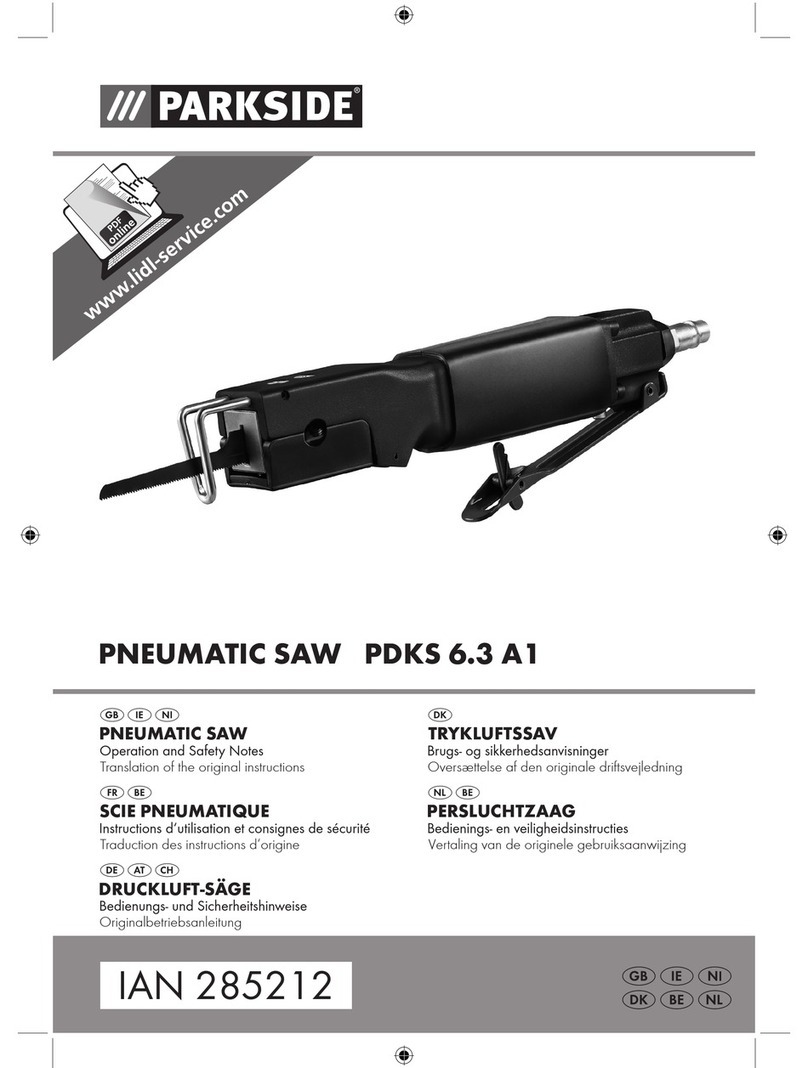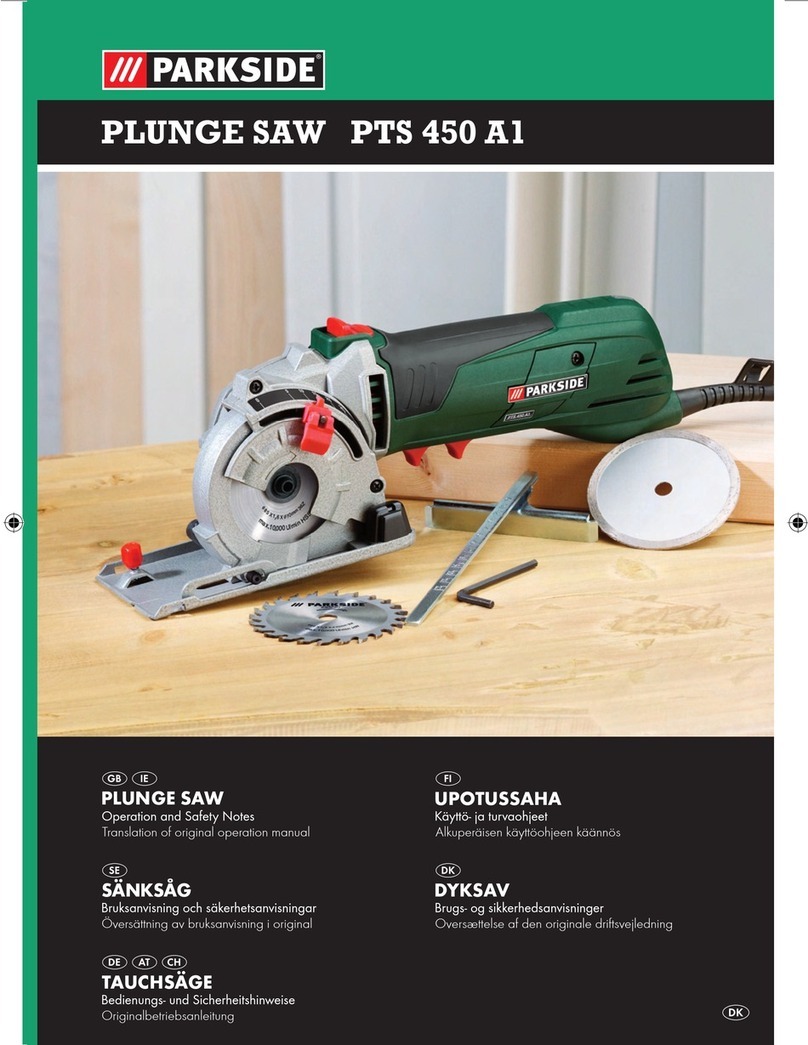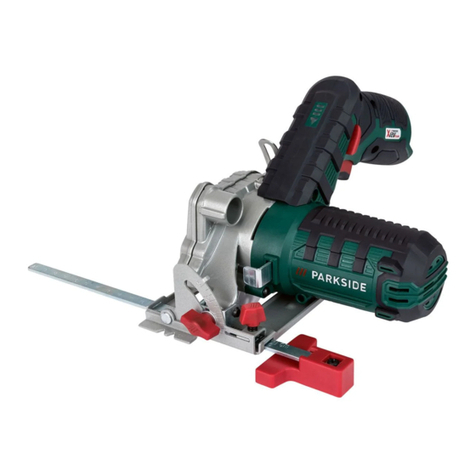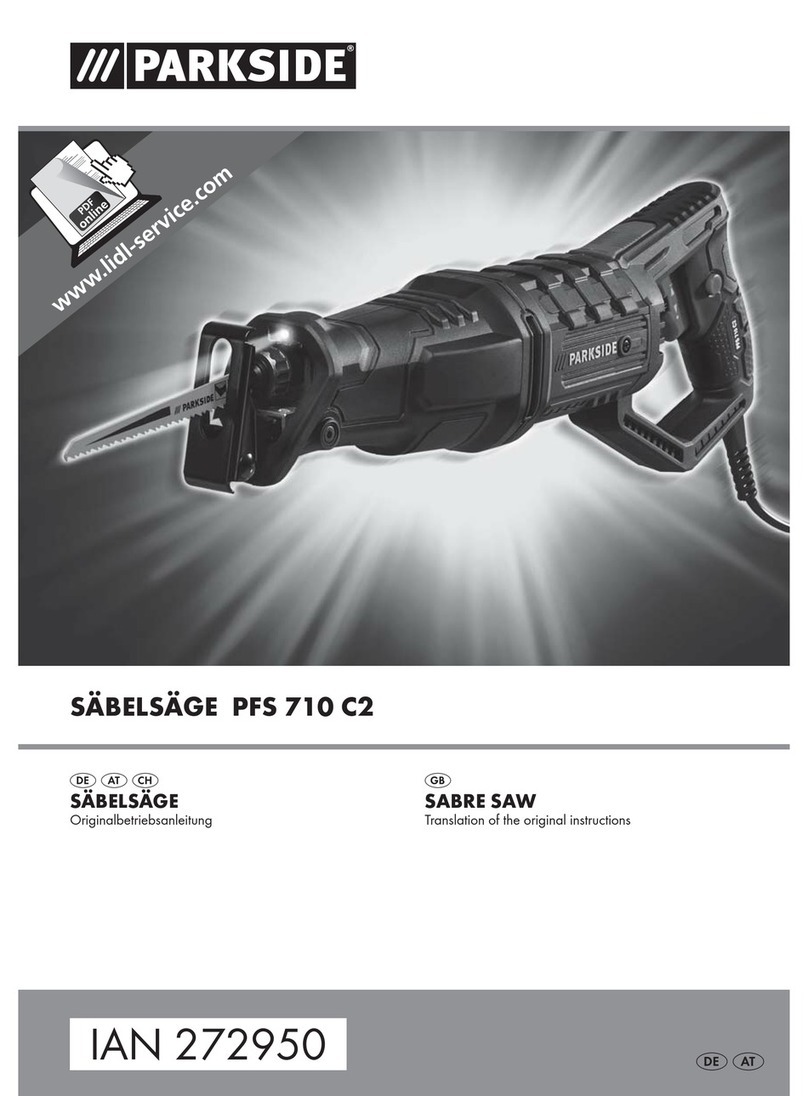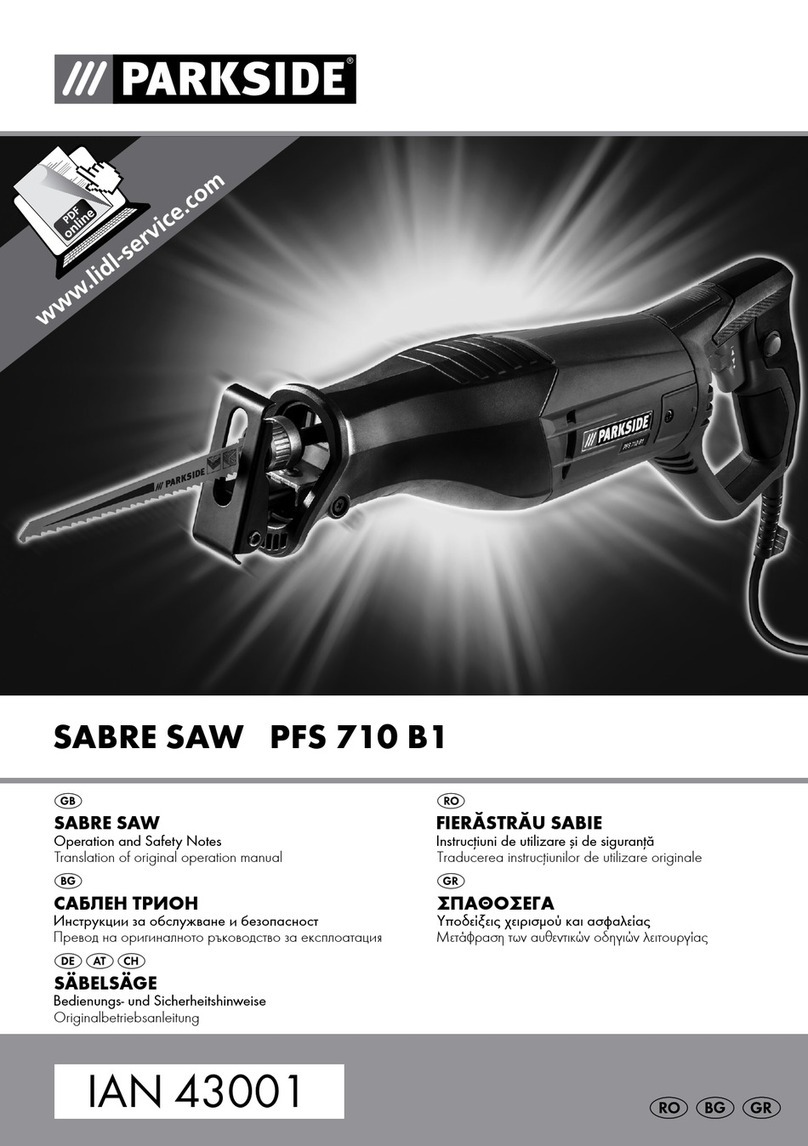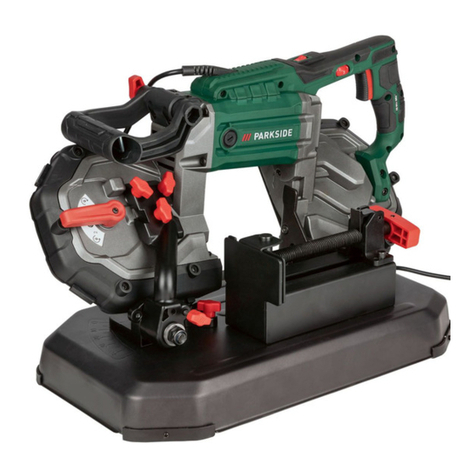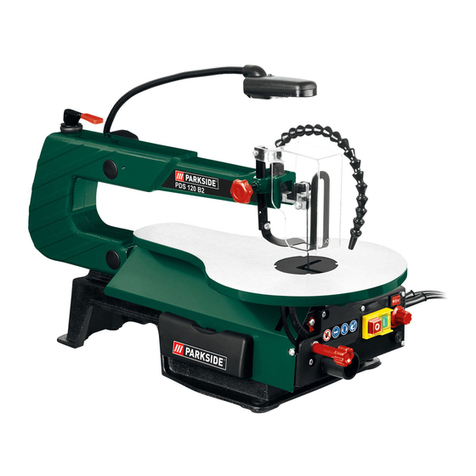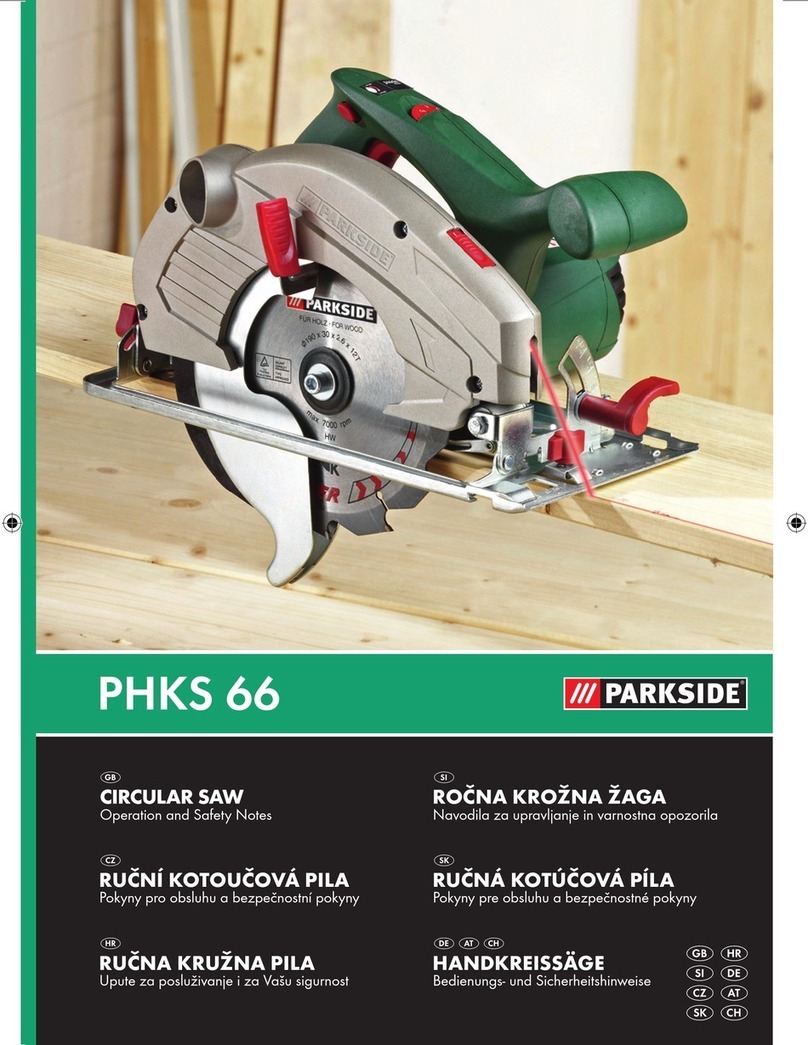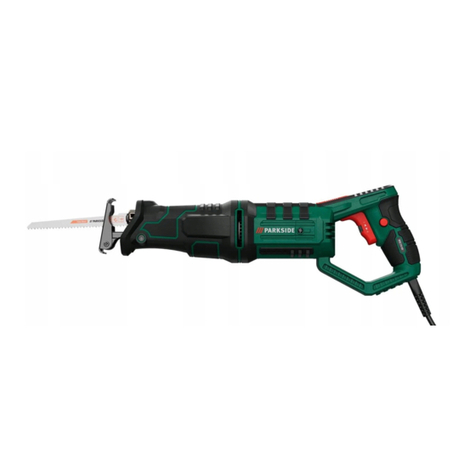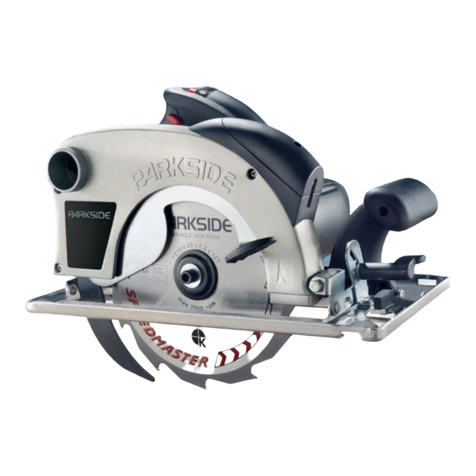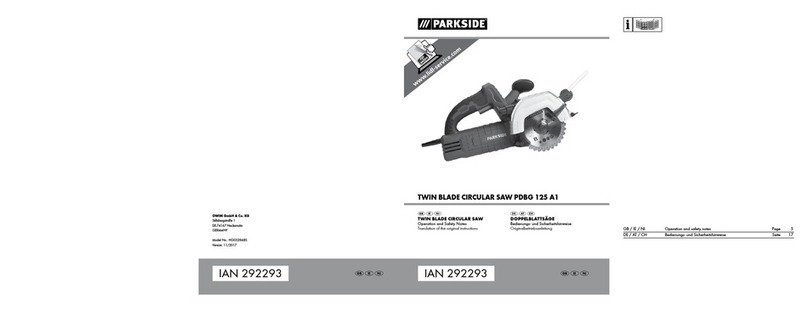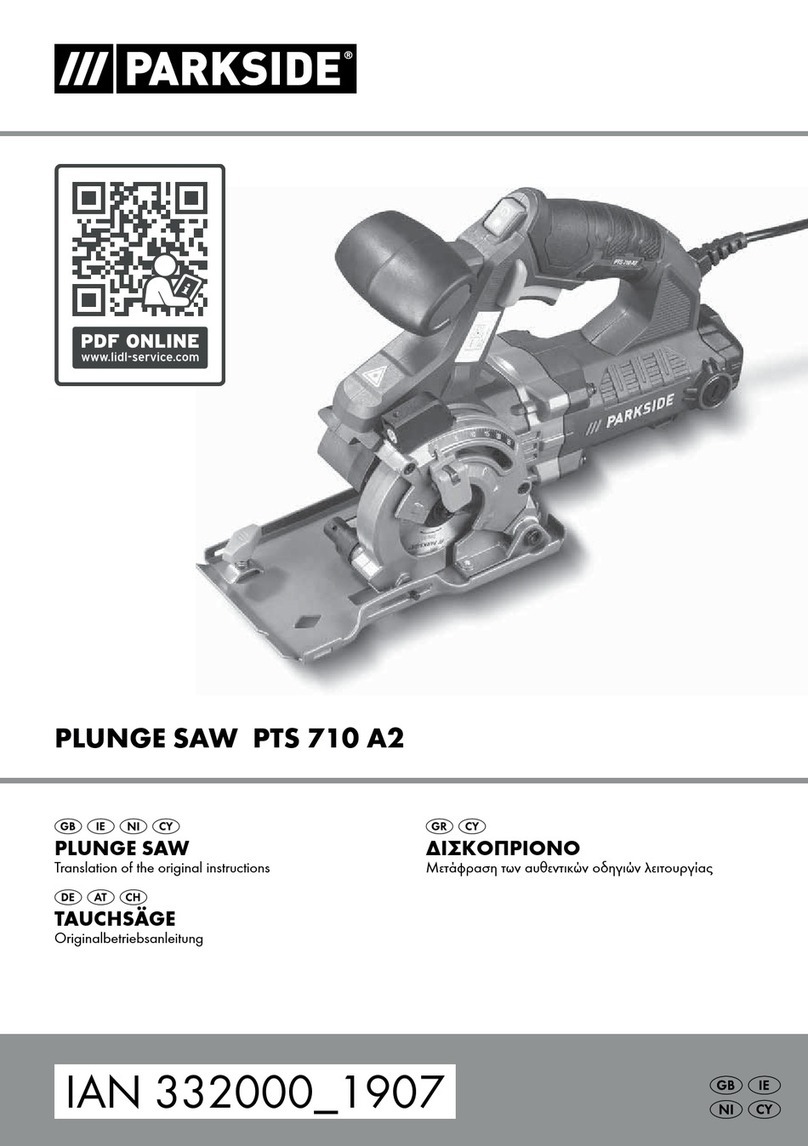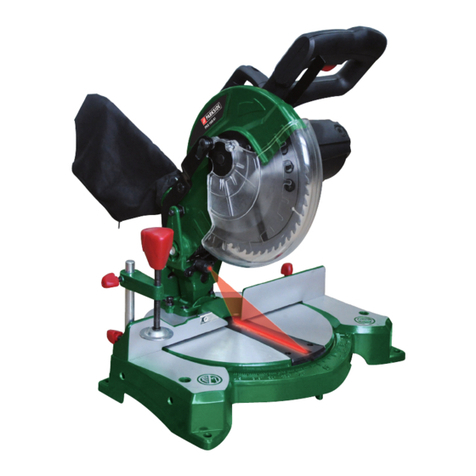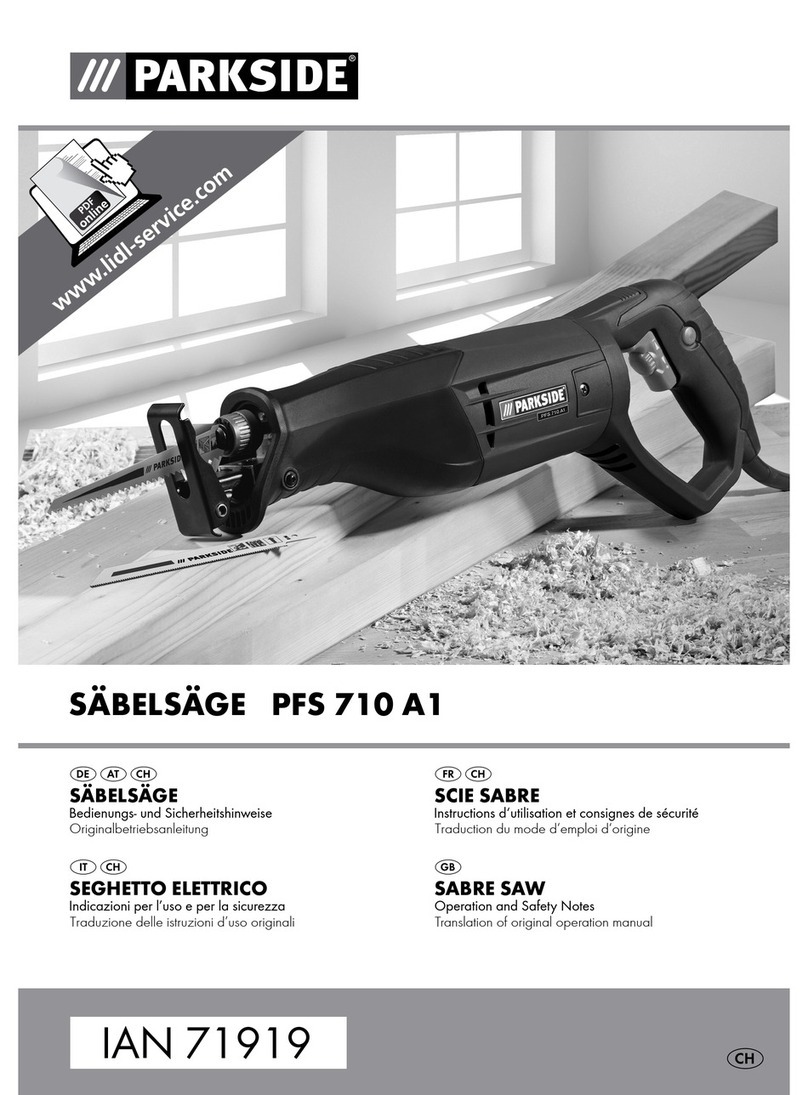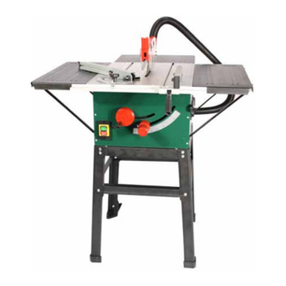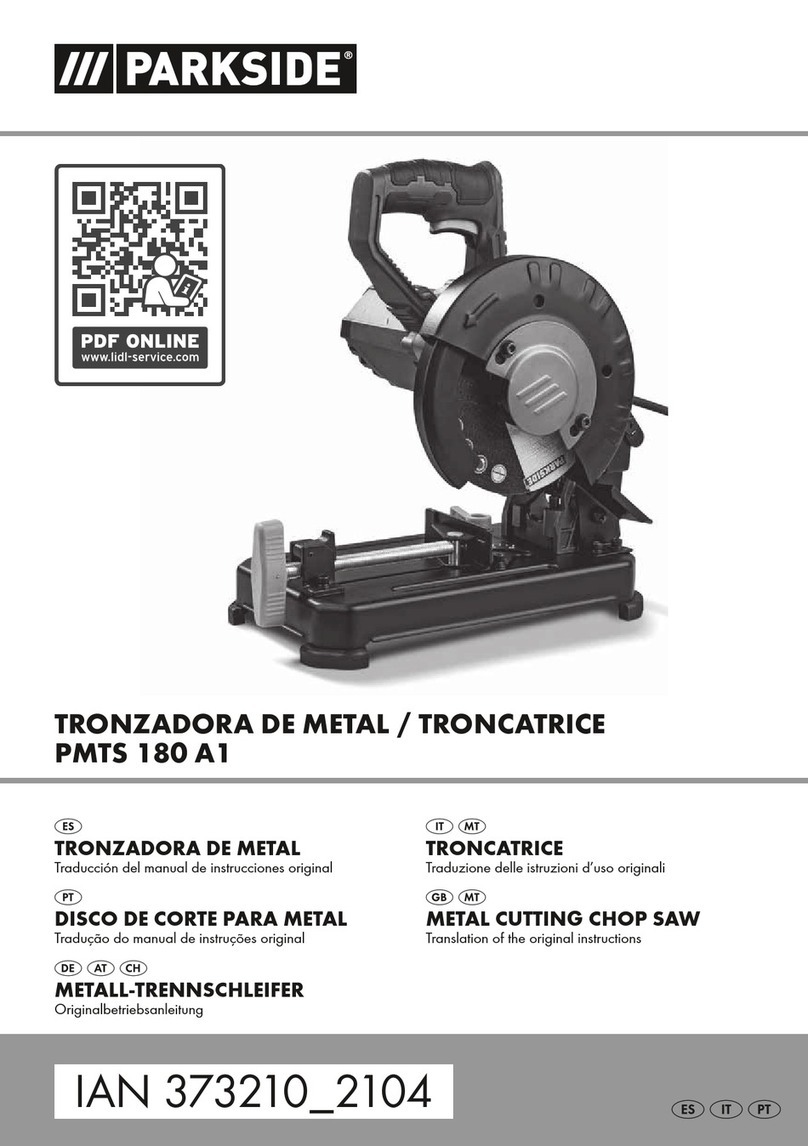General safety advice/Assembly
device. Pull the plug out of the mains socket im-
mediately and have the device repaired by a
suitably qualified person or at the Customer
Service Centre.
Always work with the mains lead leading
away from the rear of the device.
If a dangerous situation arises, pull the mains
plug immediately out of the mains socket.
Always switch on the electrical power tool before
moving the workpiece against it. Otherwise
there is the risk of kickback.
Do not cut moist materials or damp surfaces,
Use only undamaged, defect-free saw blades 7.
Distorted or blunt saw blades 7can break or
cause a kickback.
Ensure that the teeth on the saw blade 7point
downwards before you mount it in the device.
DANGER OF INJURY! Keep your hands
away from the area of the saw blade.
Before sawing, check the workpiece for foreign
bodies such as nails etc. and remove them. In-
jury and/or damage to property may result from
the saw blade striking nails etc. embedded in
the workpiece.
Always keep the device clean, dry and free
from oil or grease.
Switch off the device before you remove any
wood residue from around the saw blade.
Otherwise you could become injured.
HAZARDOUS DUSTS/
VAPOURS! Any noxious dusts or vapours
generated from sawing represent a risk to the
health of the person operating the device and
to anyone near the work area.
Do not saw materials containing substances
harmful to health.
Do not use the tool on materials containing
asbestos. Asbestos is a known carcinogen.
Make sure you have adequate ventilation.
Wear protective glasses, hearing
protection, dust protection masks
and protective gloves.
Q
Advice on use
Push the workpiece slowly and with minimum
pressure on to the saw blade.
Reduce the rate of advance when you are
cutting thicker material.
Hold the workpiece firmly on the table with
both hands and push it slowly towards the saw
blade. Otherwise the saw blade may twist or
break.
Avoid making any sharp changes in direction
during sawing to prevent the saw blade from
twisting or tearing.
Before starting the saw cut, drill a hole at a
corner or internal cut-out in the workpiece and
start sawing from the hole.
Use the correct saw blade. The choice of saw
blade depends on the thickness and type of
material and the intended cut.
Select a saw blade with fine teeth to saw thin,
hard materials.
Use a narrow saw blade to saw small radius c
uts.
Q
Assembly
DANGER OF INJURY!
Pull the mains plug out of the socket before you
carry out any task on the device,
Q
Attaching the blade guard 9
(see Fig. A)
Push the screw 10c from the inside through the
slot in the blade guard 9.
From the outside of the blade guard 9, place
the guide plate 10b on to the screw 10c .
The longer of the angled sides of the guide
plate 10b reaches around the cover 9.
Attach the blade guard 9between the two at-
tachment arms 11 and insert the two screws 10c
through the openings provided for them in the
attachment arms 11 .
Ensure that the upwardly curved end of the
blade guard 9is at the top.
Put the plain washers 10a on from the outside
of the attachment arms 11 .
Screw the knurled nuts 10 on to the two screw
ends 10c .

